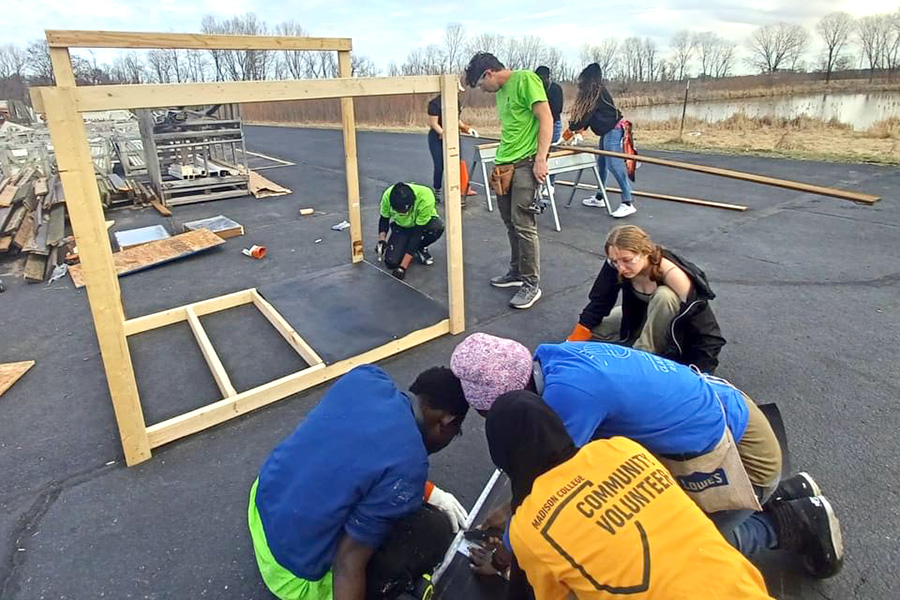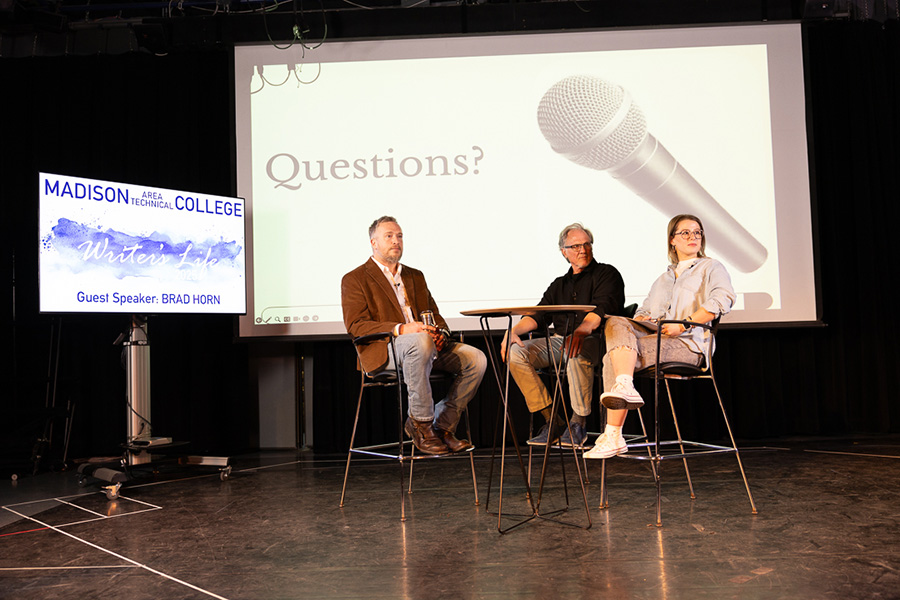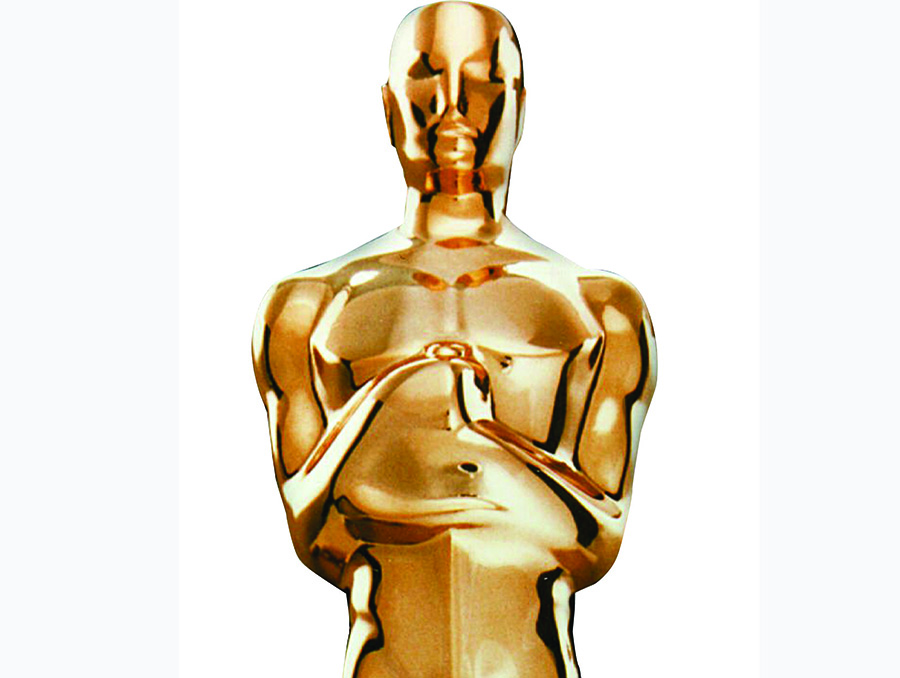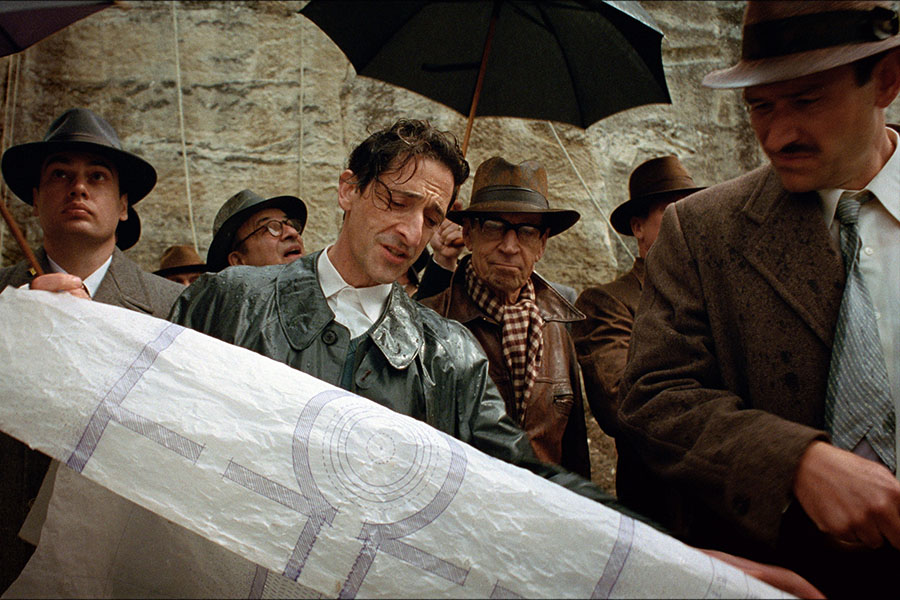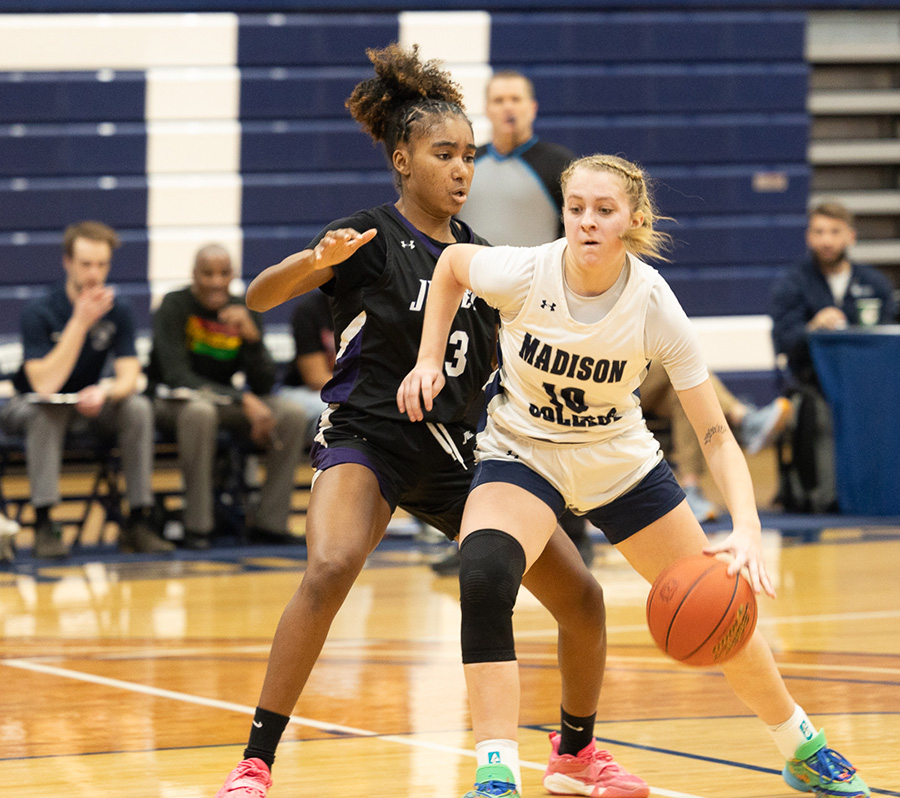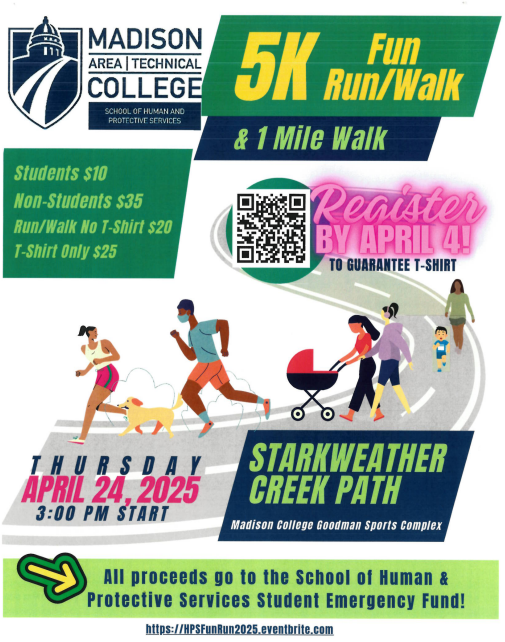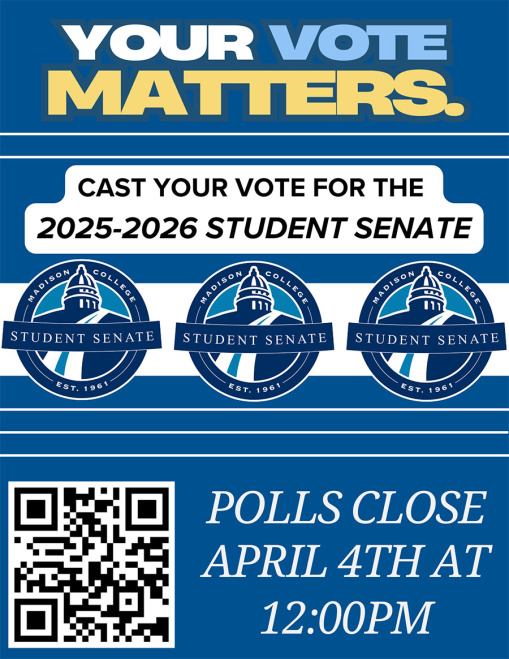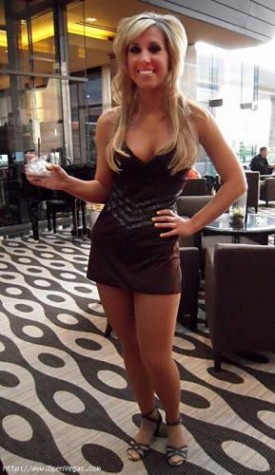Behind the Cardboard Cubicle: Gender in the Workplace
April 10, 2015
The gender binary, (the idea that male and female are two exclusive ends of a non-spectrumed stream) is finally being challenged by society. However there are still some areas of modern life deeply entrenched in misogynist tendency and patriarchal rule. Millions of women all over the world experience discrimination, threat, or violence based soley on their gender. Currently, I work in an environment where I am not deemed worthy of my paycheck by the contours of the my body, but that has not always been the case.
For six long years, from 18 to 24, I served beer, wine, cocktails, pie, steak, hot wings, cheese curds, pork belly, bibimbap, waffles, ice cream, coffee, and croissants, and myriad of other desires to happy paying customers, or guests, as management referred to them. After years cycling up the ladder of restaurant credulity, I felt used by the people populating my workplace. Long hours, leery stares, and late nights took a toll on my health and happiness.
Nowhere was this worse than the last establishment where I cocktailed. Cocktail waitressing immediately ignites the mind with images of beautiful women offering icy drinks to men in suits and the clubs staff roster was rife with hot, slender blondes in push-up bras and lingerie-length dresses. Being among them was mildly infuriating, their conversation uninteresting and their serving skills mediocre but they raked in money over their cleavage like leaves in late October.
openvegas.com
Hello! My name is *blank* and I’ll be your eye candy tonight.
I have never worn very much make up, and although my style would never be described at modest, it’s not sexual in the way the club girls dressed. I felt younger than the girls I worked with, even though I was older than most of them. I spent at least a half hour getting ready for every shift, and felt inadequate if I walked out of door with disheveled hair and imperfect make up.
How I looked and acted, outside of professional drink delivery, greatly influenced how well people tipped me. Out of curiosity, I began paying more attention to how much more I made on nights I wore make up versus those when I didn’t. I found that even though my personal mannerism, professionalism, and service remained similar, I would make at least a third more on nights I was done up.
The girls themselves feed into the attitude by talking constantly of appearance. “Oh, I hate my hair, it’s so damaged.” “I just got this new bra!” “That dress looks great on you.” How I looked seemed to matter to my co workers, even though it didn’t seem like that big of a deal to me. Recently I took a class on gender and sociology and we would discuss the competition between women, and how ladies tend enforce societal pressures among themselves. As the girls talked in circles about hair makeup, I sat on the other side of the showroom doodling on my drink pad.
The shift itself was a multi hour affair where flirtation and acceptance of harassment increased your hourly wage. Old men on dates would squeeze my leg at the gap between my mini dress and thigh highs. Bartenders regularly made sexual jokes, commented on server appearance and even though it was “all in good fun” it was clear where the gender lines were drawn. All the men were bartenders and about 80-90 percent of the servers were women. There was a constant tension between the groups, with bartenders usually feeling shorted for their efforts as the some of girls walked out with hundreds in cash.
Physically demanding and emotionally draining, I was finally able to quit the service industry in May of 2014. But it was a struggle to make the decision. Many nights I got home with too little money for the graces I gave undeserving patrons. But there were those other early midnight-mornings where I counted my cash and found the amount to be too sustaining to quit. Things worked out pretty well though. I was able to leave as a regular server after accepting the position as Editor in Chief of the Clarion. And things are a lot better now.
When I finish at the paper, I feel accomplished, proud, and connected, since it’s always a huge group effort to get it out on time. Nobody cares about the fact that I am female. I have the respect and trust of my staff and I lead a group of disorganized creative types in a world dominated by male leadership. I work in a cardboard box cave I made for addition work privacy. People are even supposedly intimidated by me, something I have always associated with men. I get to wear whatever I’m comfortable in and people respect me based on my actual work, which is excellent. Rather than have people compliment me on my body, teachers call my office phone to say how great the publication is, better than it ever has been even. (Not that I mind body compliments, but I don’t need them from creepy old men.)
So there is progress, depending on the work environment, it is possible to be respected outside of the gender expression I choose that day. How does gender play into your workplace experience? Perhap you have had similar experience or something relatable. It isn’t just women that are negatively affected by gendered workplace expectations. Maybe someday, cocktail waitresses will be treated with the same quality and respect as newspaper editors, but until them, I will stick to my cardboard cave. I can wear my toe shoes in here.
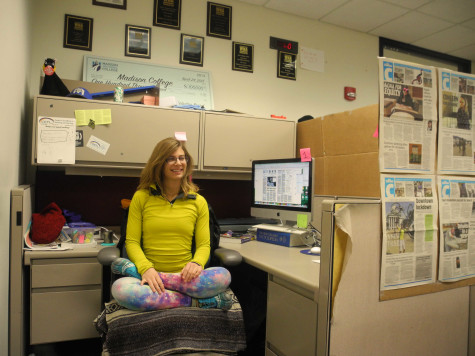
Dress code is causal in the Clarion newsroom.
Here I am in the cubicle, dressed in my typical professional wear: neon patterned leggings, athletic wear and toe shoes.
In the next blog post, I’ll set a scene and allow you a better view into some of the other characters in the Clarion newsroom.


